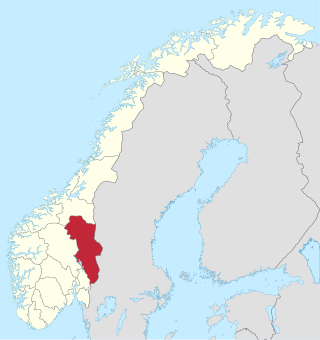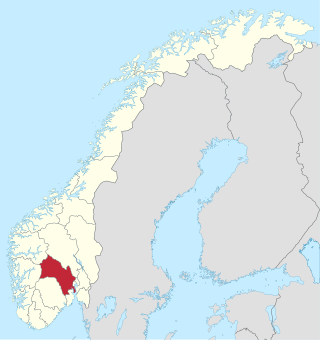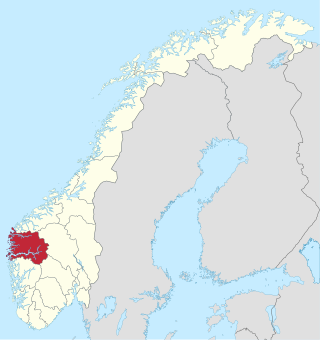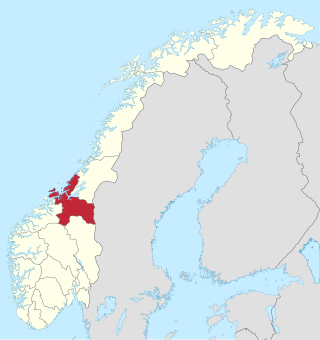The politics of Norway take place in the framework of a parliamentary, representative democratic constitutional monarchy. Executive power is exercised by the Council of State, the cabinet, led by the prime minister of Norway. Legislative power is vested in both the government and the legislature, the Storting, elected within a multi-party system. The judiciary is independent of the executive branch and the legislature.

The Storting is the supreme legislature of Norway, established in 1814 by the Constitution of Norway. It is located in Oslo. The unicameral parliament has 169 members and is elected every four years based on party-list proportional representation in nineteen multi-seat constituencies. A member of the Storting is known in Norwegian as a stortingsrepresentant, literally "Storting representative".
Norway elects its legislature on a national level. The parliament, the Storting, has 169 members elected for a four-year term by a form of proportional representation in multi-seat constituencies.

Akershus is one of the 19 multi-member constituencies of the Storting, the national legislature of Norway. The constituency was established in 1921 following the introduction of proportional representation for elections to the Storting. It consists of the municipalities of Ås, Asker, Aurskog-Høland, Bærum, Eidsvoll, Enebakk, Frogn, Gjerdrum, Hurdal, Lillestrøm, Lørenskog, Lunner, Nannestad, Nes, Nesodden, Nittedal, Nordre Follo, Rælingen, Ullensaker and Vestby in the county of Akershus. The constituency currently elects 18 of the 169 members of the Storting using the open party-list proportional representation electoral system. At the 2021 parliamentary election it had 471,106 registered electors.

Østfold is one of the 19 multi-member constituencies of the Storting, the national legislature of Norway. The constituency was established in 1921 following the introduction of proportional representation for elections to the Storting. It consists of the municipalities of Aremark, Fredrikstad, Halden, Hvaler, Indre Østfold, Marker, Moss, Råde, Rakkestad, Sarpsborg, Skiptvet and Våler in the county of Viken. The constituency currently elects eight of the 169 members of the Storting using the open party-list proportional representation electoral system. At the 2021 parliamentary election it had 223,945 registered electors.

Hedmark is one of the 19 multi-member constituencies of the Storting, the national legislature of Norway. The constituency was established in 1921 following the introduction of proportional representation for elections to the Storting. It consists of the municipalities of Alvdal, Åmot, Åsnes, Eidskog, Elverum, Engerdal, Folldal, Grue, Hamar, Kongsvinger, Løten, Nord-Odal, Os, Rendalen, Ringsaker, Sør-Odal, Stange, Stor-Elvdal, Tolga, Trysil, Tynset and Våler in the county of Innlandet. The constituency currently elects six of the 169 members of the Storting using the open party-list proportional representation electoral system. At the 2021 parliamentary election it had 152,228 registered electors.

Oppland is one of the 19 multi-member constituencies of the Storting, the national legislature of Norway. The constituency was established as Opland in 1921 following the introduction of proportional representation for elections to the Storting. Its spelling was settled as Oppland in 1950. It consists of the municipalities of Dovre, Etnedal, Gausdal, Gjøvik, Gran, Lesja, Lillehammer, Lom, Nord-Aurdal, Nord-Fron, Nordre Land, Østre Toten, Øyer, Øystre Slidre, Ringebu, Sel, Skjåk, Søndre Land, Sør-Aurdal, Sør-Fron, Vågå, Vang, Vestre Slidre and Vestre Toten in the county of Innlandet. The constituency currently elects five of the 169 members of the Storting using the open party-list proportional representation electoral system. At the 2021 parliamentary election it had 132,383 registered electors.

Buskerud is one of the 19 multi-member constituencies of the Storting, the national legislature of Norway. The constituency was established in 1921 following the introduction of proportional representation for elections to the Storting. It consists of the municipalities of Ål, Drammen, Flå, Gol, Hemsedal, Hol, Hole, Jevnaker, Kongsberg, Krødsherad, Lier, Modum, Nesbyen, Nore og Uvdal, Øvre Eiker, Ringerike, Rollag and Sigdal in the county of Viken. The constituency currently elects seven of the 169 members of the Storting using the open party-list proportional representation electoral system. At the 2021 parliamentary election it had 191,637 registered electors.

Vestfold is one of the 19 multi-member constituencies of the Storting, the national legislature of Norway. The constituency was established in 1921 following the introduction of proportional representation for elections to the Storting. It consists of the municipalities of Færder, Holmestrand, Horten, Larvik, Sandefjord and Tønsberg in the county of Vestfold. The constituency currently elects six of the 169 members of the Storting using the open party-list proportional representation electoral system. At the 2021 parliamentary election it had 182,961 registered electors.

Telemark is one of the 19 multi-member constituencies of the Storting, the national legislature of Norway. The constituency was established in 1921 following the introduction of proportional representation for elections to the Storting. It consists of the municipalities of Bamble, Drangedal, Fyresdal, Hjartdal, Kragerø, Kviteseid, Midt-Telemark, Nissedal, Nome, Notodden, Porsgrunn, Seljord, Siljan, Skien, Tinn, Tokke and Vinje in the county of Telemark. The constituency currently elects five of the 169 members of the Storting using the open party-list proportional representation electoral system. At the 2021 parliamentary election it had 130,953 registered electors.

Aust-Agder is one of the 19 multi-member constituencies of the Storting, the national legislature of Norway. The constituency was established in 1921 following the introduction of proportional representation for elections to the Storting. It consists of the municipalities of Åmli, Arendal, Birkenes, Bygland, Bykle, Evje og Hornnes, Froland, Gjerstad, Grimstad, Iveland, Lillesand, Risør, Tvedestrand, Valle and Vegårshei in the county of Agder. The constituency currently elects three of the 169 members of the Storting using the open party-list proportional representation electoral system. At the 2021 parliamentary election it had 87,300 registered electors.

Vest-Agder is one of the 19 multi-member constituencies of the Storting, the national legislature of Norway. The constituency was established in 1921 following the introduction of proportional representation for elections to the Storting. It consists of the municipalities of Åseral, Farsund, Flekkefjord, Hægebostad, Kristiansand, Kvinesdal, Lindesnes, Lyngdal, Sirdal and Vennesla in the county of Agder. The constituency currently elects five of the 169 members of the Storting using the open party-list proportional representation electoral system. At the 2021 parliamentary election it had 137,466 registered electors.

Rogaland is one of the 19 multi-member constituencies of the Storting, the national legislature of Norway. The constituency was established in 1921 following the introduction of proportional representation for elections to the Storting. It is conterminous with the county of Rogaland. The constituency currently elects 13 of the 169 members of the Storting using the open party-list proportional representation electoral system. At the 2021 parliamentary election it had 333,475 registered electors.

Sogn og Fjordane is one of the 19 multi-member constituencies of the Storting, the national legislature of Norway. The constituency was established in 1921 following the introduction of proportional representation for elections to the Storting. It consists of the municipalities of Årdal, Askvoll, Aurland, Bremanger, Fjaler, Gloppen, Gulen, Høyanger, Hyllestad, Kinn, Lærdal, Luster, Sogndal, Solund, Stad, Stryn, Sunnfjord and Vik in the county of Vestland. The constituency currently elects three of the 169 members of the Storting using the open party-list proportional representation electoral system. At the 2021 parliamentary election it had 78,282 registered electors.

Sør-Trøndelag is one of the 19 multi-member constituencies of the Storting, the national legislature of Norway. The constituency was established in 1921 following the introduction of proportional representation for elections to the Storting. It consists of the municipalities of Åfjord, Frøya, Heim, Hitra, Holtålen, Indre Fosen, Malvik, Melhus, Midtre Gauldal, Oppdal, Orkland, Ørland, Osen, Rennebu, Rindal, Røros, Selbu, Skaun, Trondheim and Tydal in the county of Trøndelag. The constituency currently elects nine of the 169 members of the Storting using the open party-list proportional representation electoral system. At the 2021 parliamentary election it had 247,553 registered electors.

Nord-Trøndelag is one of the 19 multi-member constituencies of the Storting, the national legislature of Norway. The constituency was established in 1921 following the introduction of proportional representation for elections to the Storting. It consists of the municipalities of Flatanger, Frosta, Grong, Høylandet, Inderøy, Leka, Levanger, Lierne, Meråker, Nærøysund, Namsos, Namsskogan, Overhalla, Raarvihke, Snåase, Steinkjer, Stjørdal and Verdal in the county of Trøndelag. The constituency currently elects four of the 169 members of the Storting using the open party-list proportional representation electoral system. At the 2021 parliamentary election it had 100,638 registered electors.














